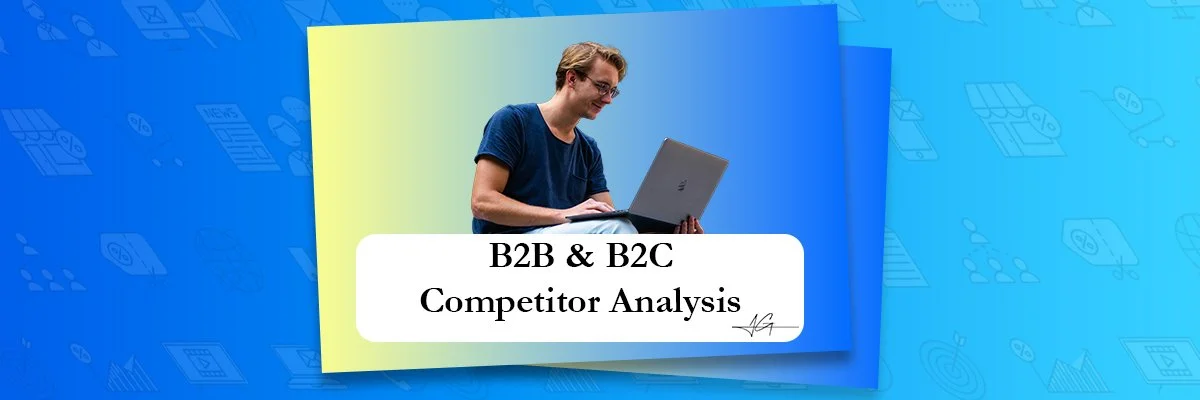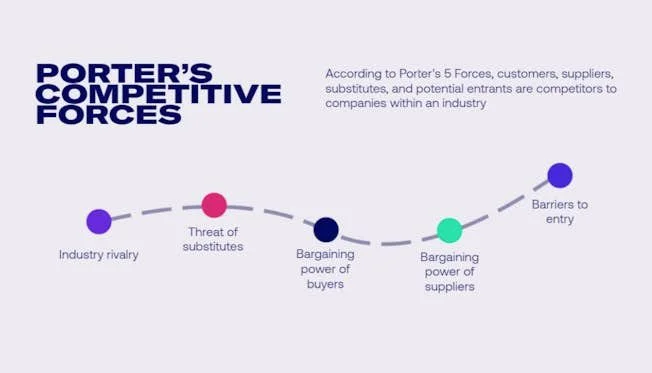Competitor Research in 2025: Why It Matters for Both B2C and B2B Brands
Growth rarely happens in a vacuum. Whether you sell artisan coffee to consumers or cloud security to enterprises, you share digital shelf space with rivals who fight for the same attention and budget. A structured competitor analysis lets you see exactly where those rivals win, where they stumble, and how you can out‑serve your shared audience. The best part? Most of the data is public and can be gathered in‑house with the right workflow and a stack of affordable (often free) tools.
1. What Is Competitive Analysis in Digital Marketing?
A competitive analysis is a repeatable process for collecting and comparing publicly available data on your rivals’ digital activity—site structure, content, pricing, ad spend, messaging, CX, and more. The goal is to benchmark your own performance, surface gaps, and transform insights into revenue‑driving actions.
For B2C brands, the work leans heavily on fast‑moving metrics such as social engagement, trending hashtags, influencer partnerships, and conversion‑rate benchmarks for mobile shoppers.
For B2B brands, you’ll place greater weight on buyer‑journey content (whitepapers, webinars, use‑case pages), partner ecosystems, pricing tiers, and onboarding experiences that affect customer lifetime value.
2. Why Do a Competitive Analysis?
| Benefit | B2C Impact | B2B Impact |
|---|---|---|
| Spot market barriers & openings | Discover untapped channels (e.g., TikTok Shop) | Identify regions or verticals with low vendor saturation |
| Sharpen value proposition | Highlight emotional hooks competitors overlook | Position unique expertise or integrations |
| Expose weak spots | Find gaps in UX, shipping, or reviews | Uncover feature gaps, SLA issues, or onboarding pain points |
| Set performance benchmarks | Track share of voice & ROAS trends | Track win rates, deal velocity, and ACV trends |
| Fuel innovation | Test new bundles or loyalty perks | Pilot usage‑based pricing or API marketplaces |
3. Core Ingredients of a High‑Impact Analysis
Segment Your Competitors
Primary: Direct substitutes targeting the same audience
Secondary: Similar solutions for a different tier or segment
Tertiary: Adjacent brands that shape expectations (e.g., Netflix’s friction‑less checkout influences SaaS buyers)
Profile Their Audience
Scan websites, mission statements, social comments, reviews, and community forums. In B2B, dig into job titles mentioned in case studies and LinkedIn ads to map the buying committee.Run the 7 Ps Diagnostic
Examine Product, Price, Promotion, Place, People, Process, Physical evidence. Prioritize the Ps that align with your goals (pricing for SaaS; promotion for DTC skincare).Choose a Framework
SWOT for quick opportunity scans
Porter’s Five Forces for industry‑level pressure points
BCG Growth Share Matrix to decide where to place bets across your own product lines
Organize Data for Action
Use a spreadsheet or dashboard to log metrics (CPC, DR, DA, organic traffic, content cadence, demo‑to‑close rate). Tag each insight as defensive, offensive, or monitor so teams know what to do next.
4. Types of Competitive Analysis (and When to Use Them)
| Analysis Type | B2C Priority | B2B Priority |
|---|---|---|
| Social Media | High – Which content themes, formats, and influencers drive engagement and social commerce? | Moderate – Which channels nurture top‑of‑funnel awareness (LinkedIn vs. X vs. Reddit)? |
| PPC / Paid Media | High – Which keywords push direct sales or app installs? | High – Which intent keywords trigger demos, trials, or ABM retargeting? |
| SEO | High – Who owns rich snippets and category keywords? | High – Who ranks for pain‑point, industry, and comparison queries? |
| Product / Feature | Medium – How are bundles, packaging, or brand collabs evolving? | High – How are feature sets, integrations, security, and SLAs differentiated? |
| Pricing & Packaging | High – Are they discount‑heavy or premium? | High – Are they per‑seat, usage‑based, or freemium? |
| Customer Experience | High – How seamless is checkout, returns, or unboxing? | High – How smooth are onboarding, enablement, and support touchpoints? |
5. Tools to Turbo‑Charge Your Research
| Function | Stand‑Out Tools | Quick Win |
|---|---|---|
| SEO Gaps | Ahrefs, SE Ranking | Export competitor keywords, filter by KD < 20, and build content briefs. |
| PPC Intel | SEMrush, SpyFu, Google Ads Auction Insights | Identify high‑intent keywords with low impression share. |
| Social Listening | Sprout Social, Brandwatch | Track share of voice and sentiment during product launches. |
| Traffic & Keyword Trends | Similarweb | Benchmark channel mix (direct, search, referral). |
| AI Assistance | ChatGPT + spreadsheet plug‑in | Summarize wins/losses across dozens of competitors in seconds. |
Pro Tip: Pair AI with domain expertise. Let ChatGPT cluster messaging angles or find semantic keyword themes, but always validate with human judgment.
6. Turning Insight into Advantage
Map Opportunities to Objectives
Link each finding to a KPI—CPL reduction, CAC payback, LTV uplift.Test, Measure, Scale
Launch quick A/B tests (ad copy, landing pages, pricing tiers). Double down only when ROI is proven.Build a Feedback Loop
Schedule quarterly refreshes. Markets move fast; your data should, too.Activate Cross‑Functional Teams
Share tailored insights—product tweaks for engineering, talk tracks for sales, creative direction for design.
Competitor research is not espionage; it is market empathy. By studying how rivals win hearts (B2C) or contracts (B2B), you gain the clarity needed to sharpen your value proposition, optimize spend, and innovate with purpose. Equip your team with a repeatable framework, a focused tool stack, and the discipline to act on the insights—and you will keep edging ahead, one strategic decision at a time.



